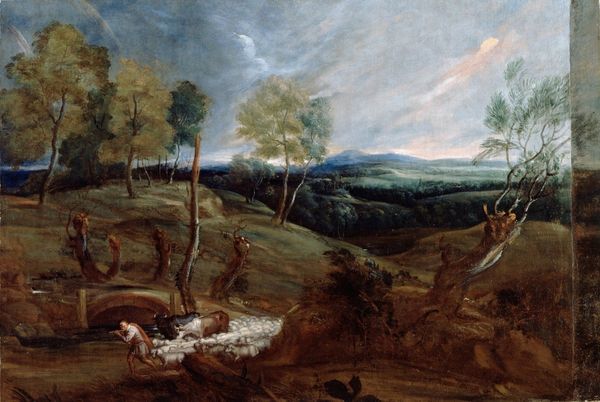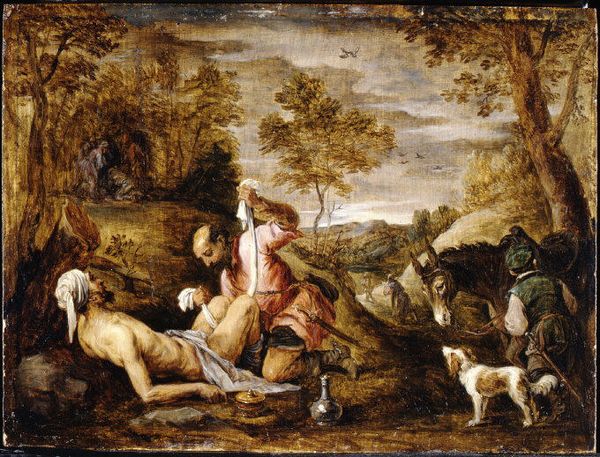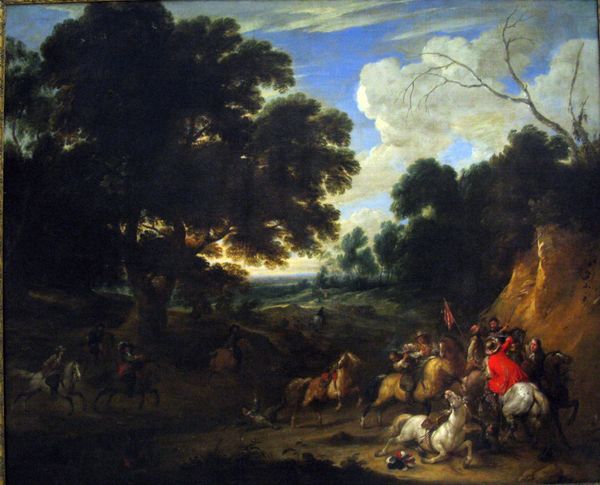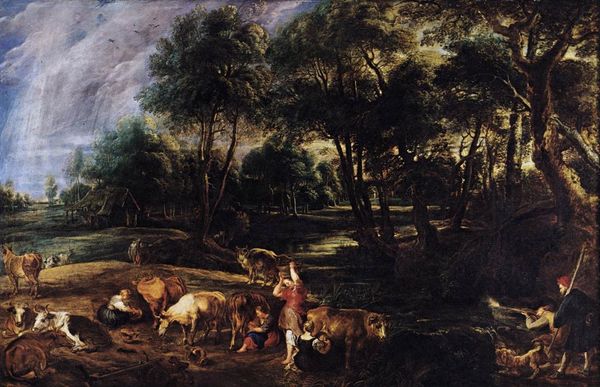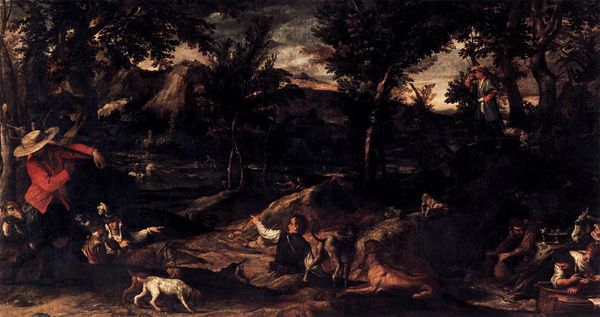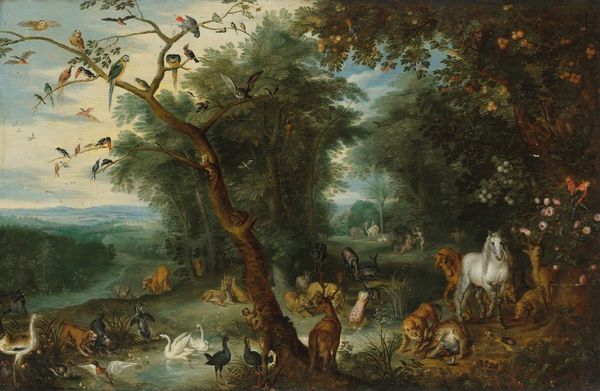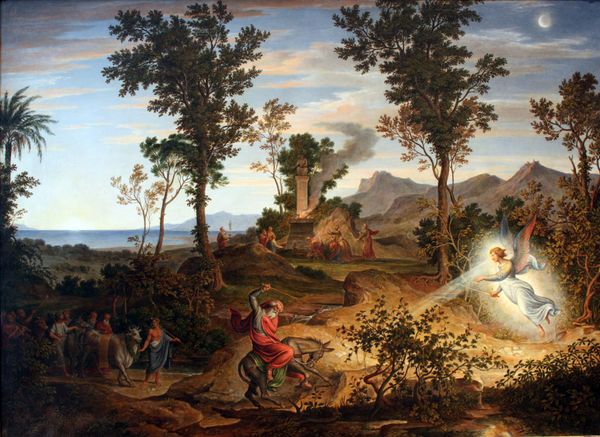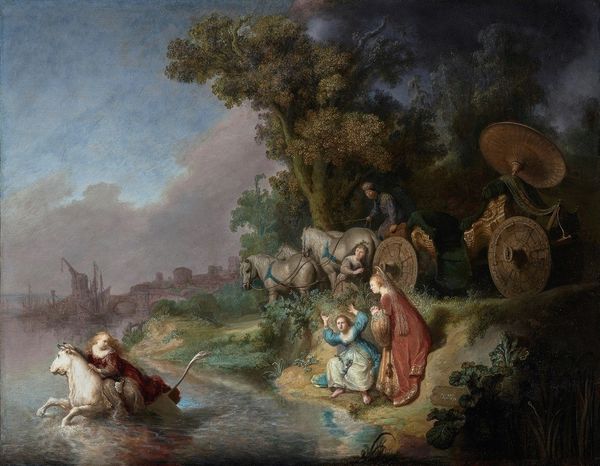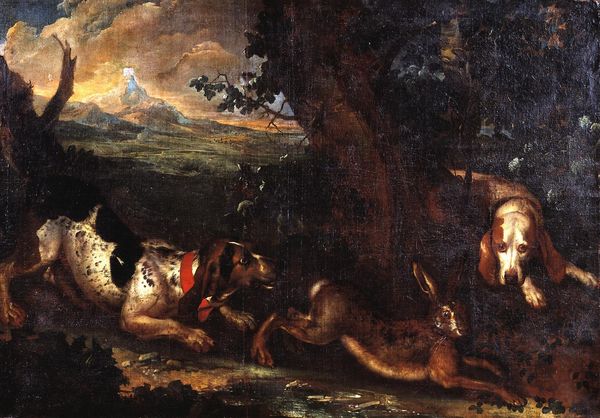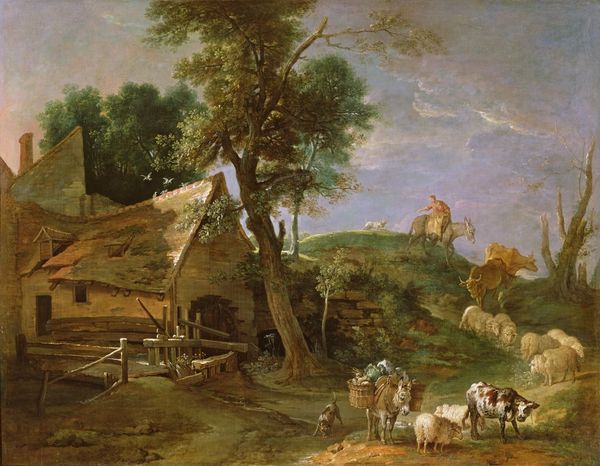
oil-paint
#
baroque
#
oil-paint
#
landscape
#
figuration
#
oil painting
#
history-painting
#
realism
Dimensions: 86 x 130 cm
Copyright: Public domain
Curator: Peter Paul Rubens's "Landscape with a Rainbow," created around 1635 and residing at the Hermitage Museum, presents us with an idyllic vista rendered in oil on canvas. Editor: My initial impression is one of almost overwhelming abundance. There's such a dense layering of form and texture, anchored by that striking diagonal slash of the rainbow. Curator: Rubens's composition expertly utilizes that very diagonal to draw the viewer's eye through the landscape. Observe how the vibrant rainbow acts as a bridge, linking the foreground figures with the distant, hazy mountains. The cultural resonance of the rainbow as a symbol of hope, promise, and divine covenant cannot be ignored here. Editor: True, the semiotic weight of the rainbow is significant, but I'm more intrigued by how its arc is mirrored by the gentle curve of the bridge in the middle ground. This echoing structure creates a visual harmony, a compositional rhyme that strengthens the image's internal coherence. It anchors the wild dynamism with something resembling stability. Curator: It speaks, perhaps, to the delicate balance between the human world and the forces of nature. The figures – the resting lovers, the musicians, and the shepherds – represent an almost pastoral ideal. Rubens often invoked these types of scenes from classical literature and mythology to emphasize moral and societal ideas of virtue and harmony with the earth. Editor: Yet, that pastoral ideal feels tempered by Rubens’ characteristic baroque exuberance. The thick impasto, the warm, earthy tones, the dramatic play of light and shadow all contribute to an emotional intensity that transcends mere idyllic representation. The materiality almost overtakes the symbolism, if you will. Curator: Possibly. It's interesting to think how Rubens evokes an allegorical and nostalgic past while utilizing stylistic dynamism. Editor: I suppose there's a bit of drama at play even in Arcadia. In summary, the artwork is as much about its texture, color, and organization as it is about its symbols and implications. Curator: Yes, by recognizing the work of signs, it brings deeper meaning. The dialogue shows the value and complexity contained inside, and not easily separated from art such as Rubens' piece.
Comments
No comments
Be the first to comment and join the conversation on the ultimate creative platform.
